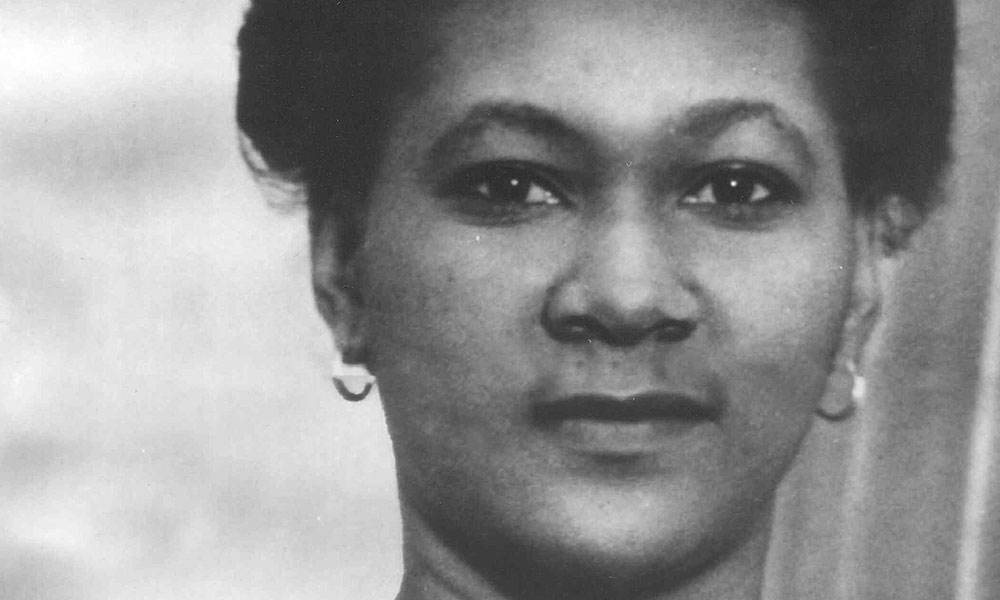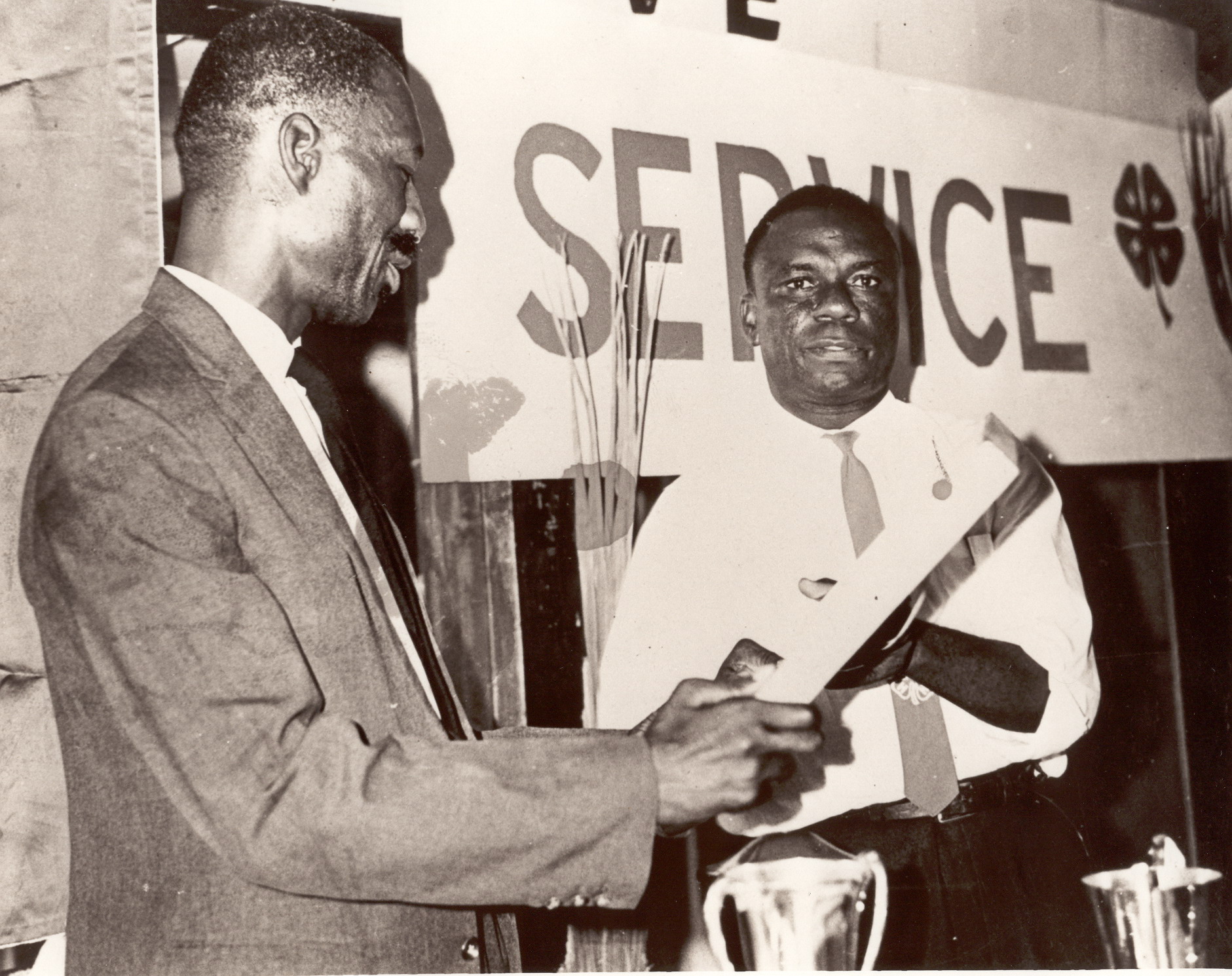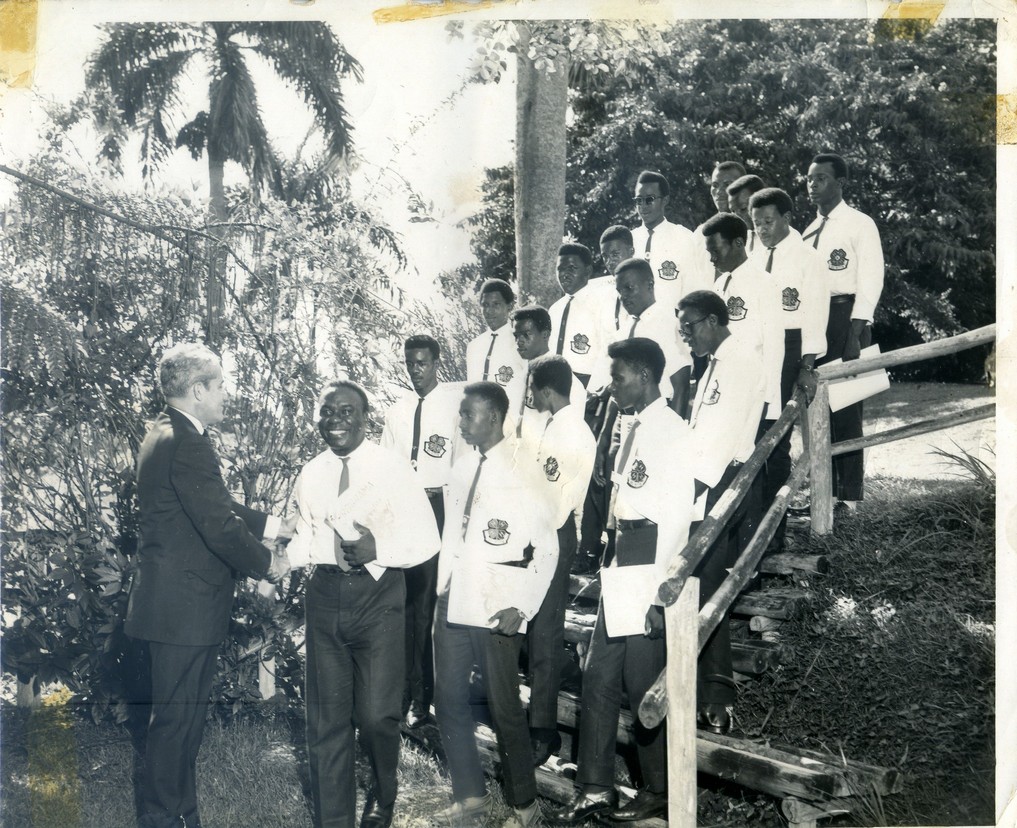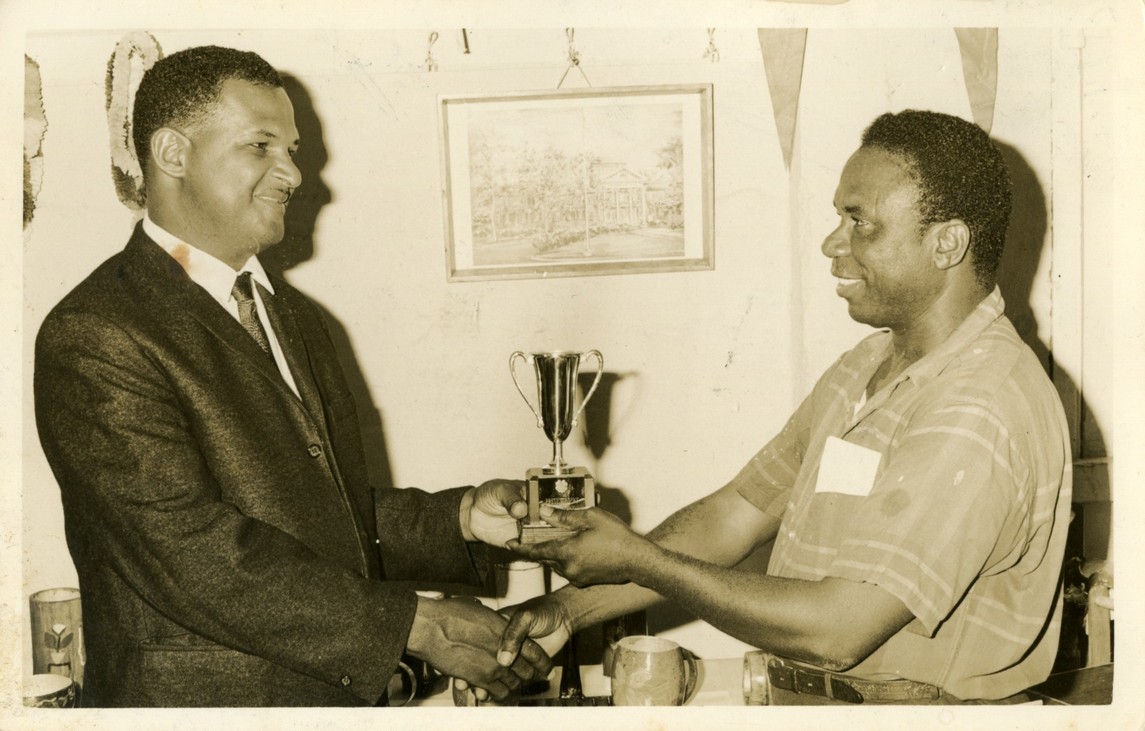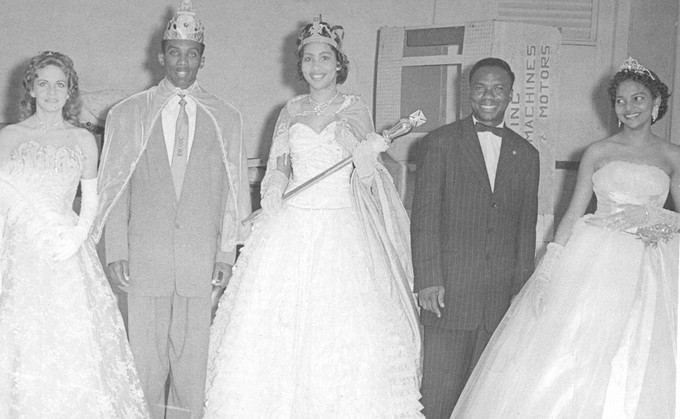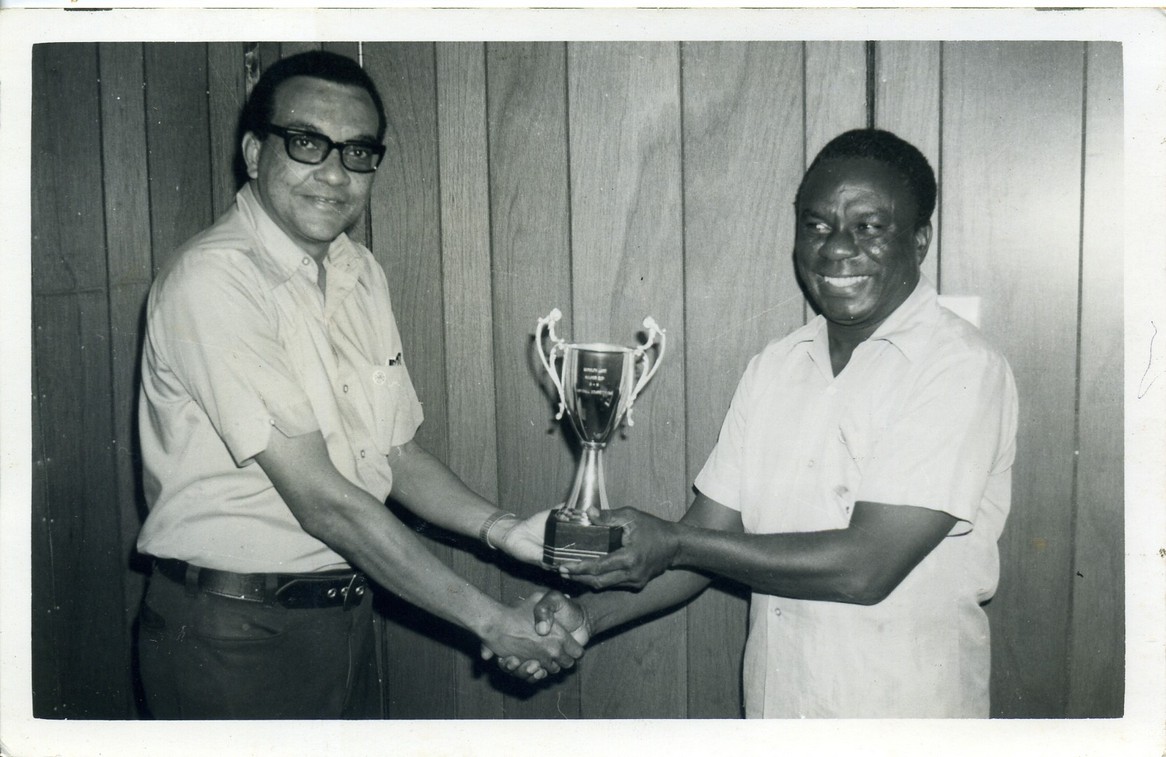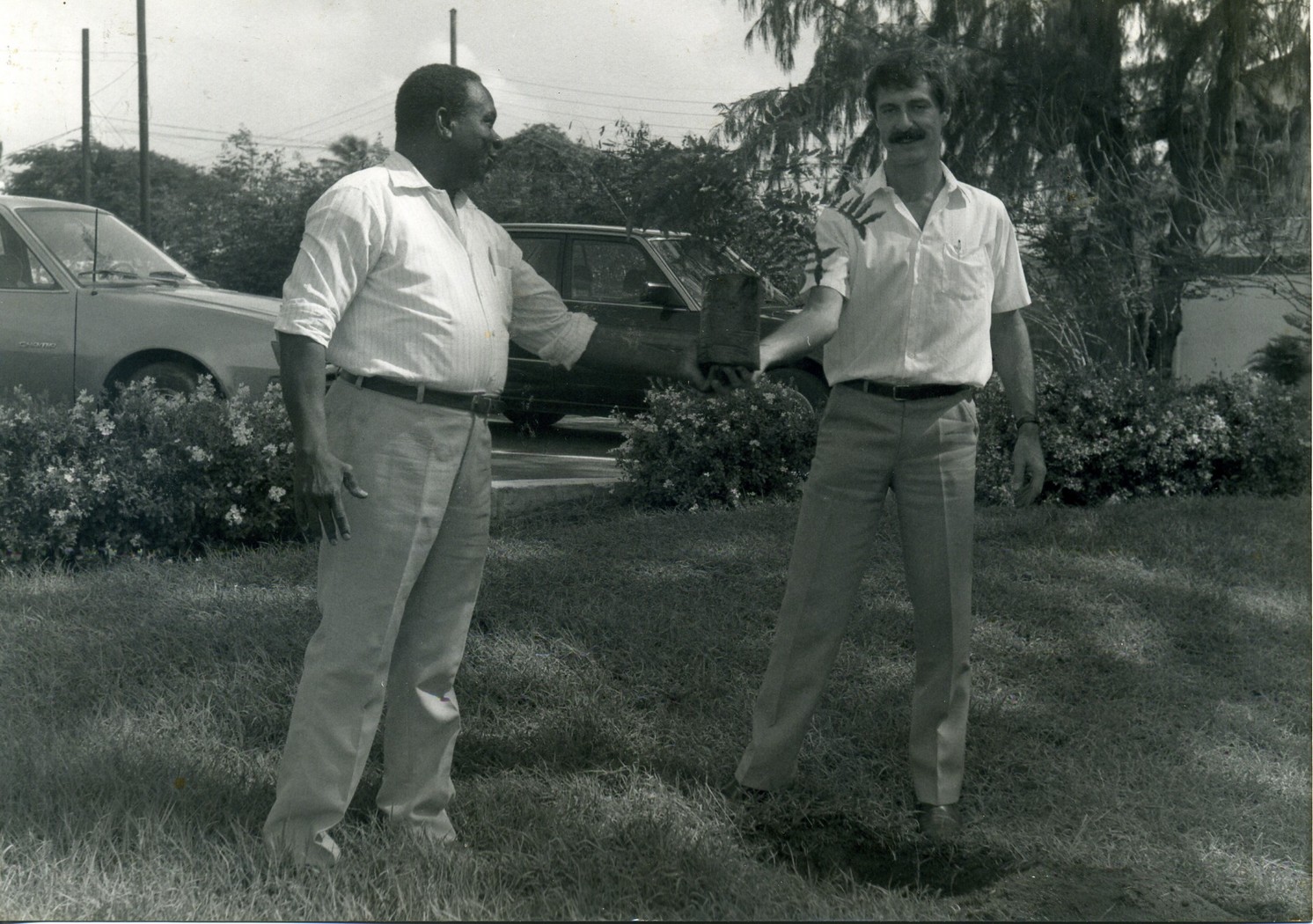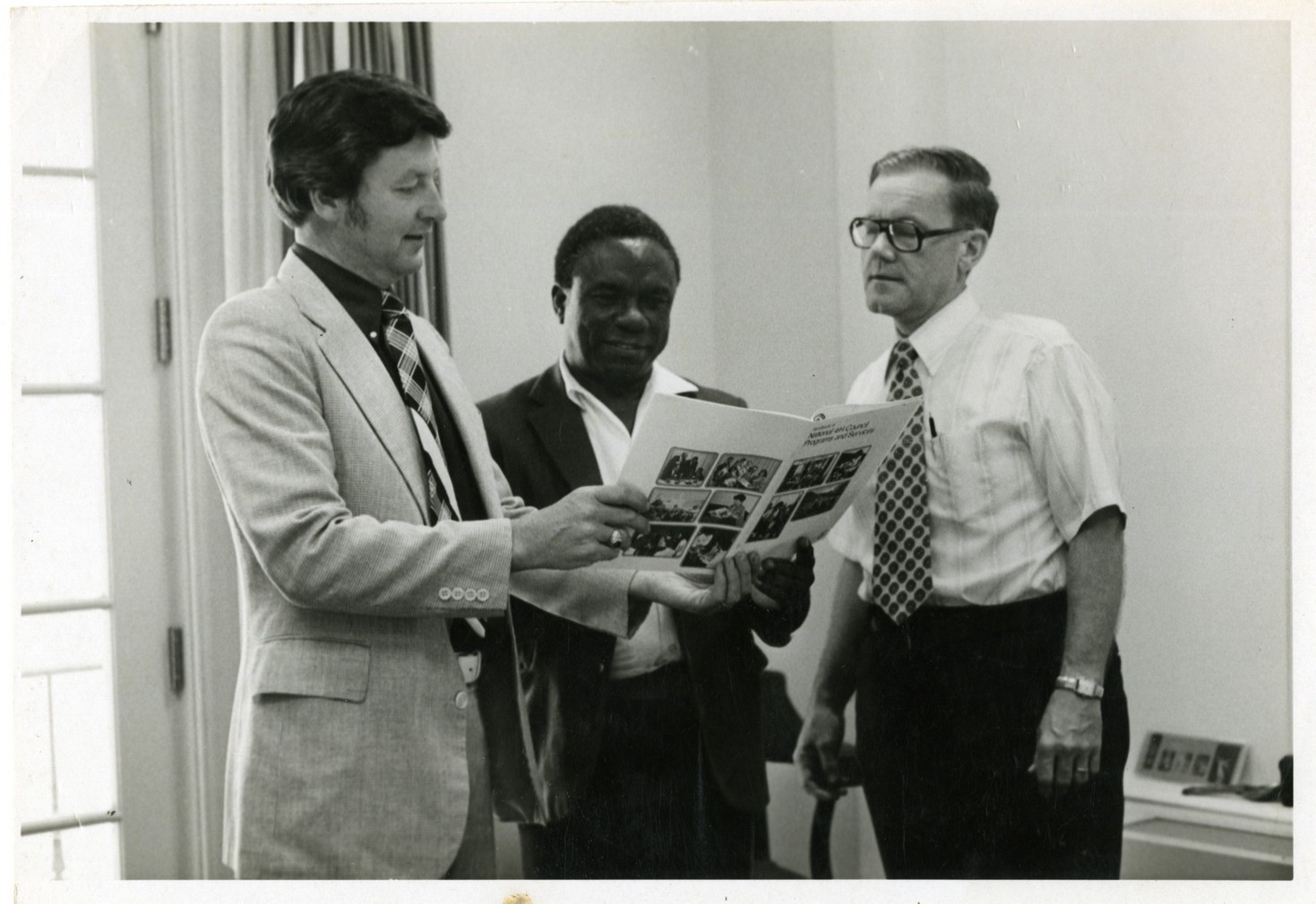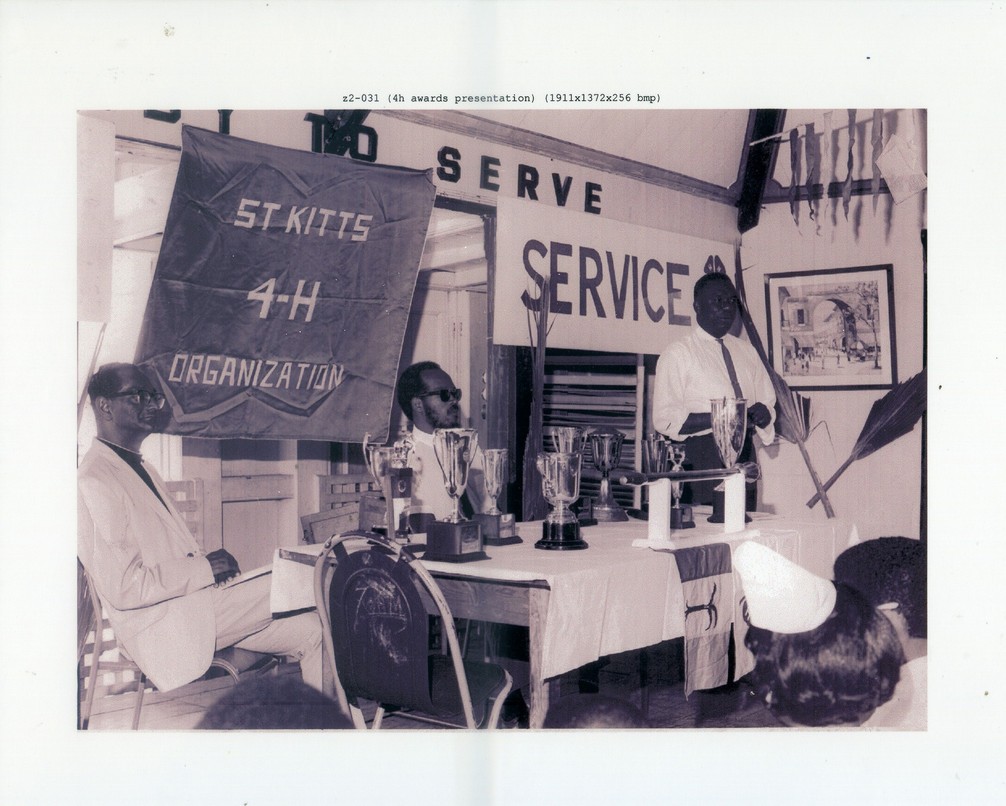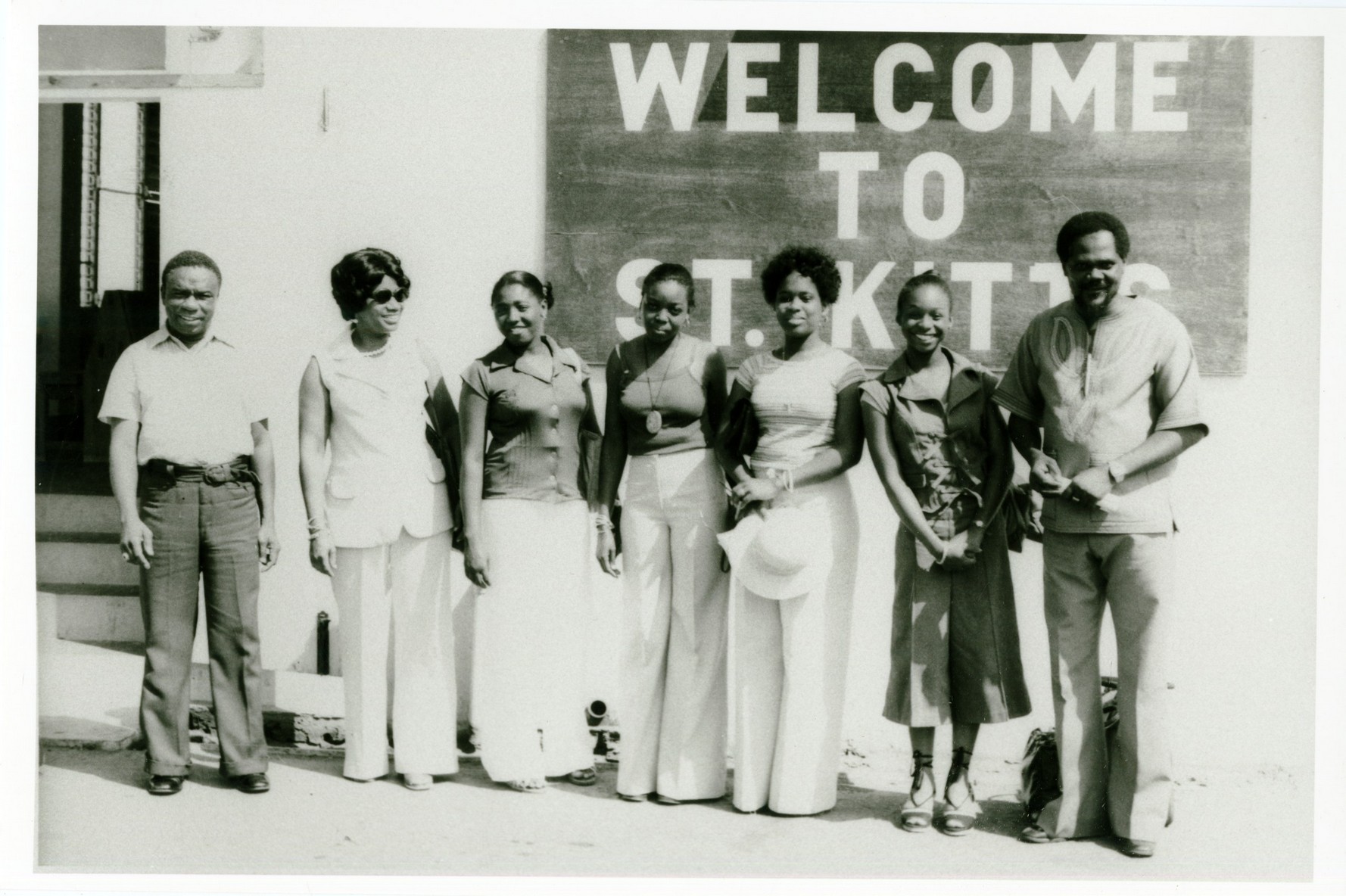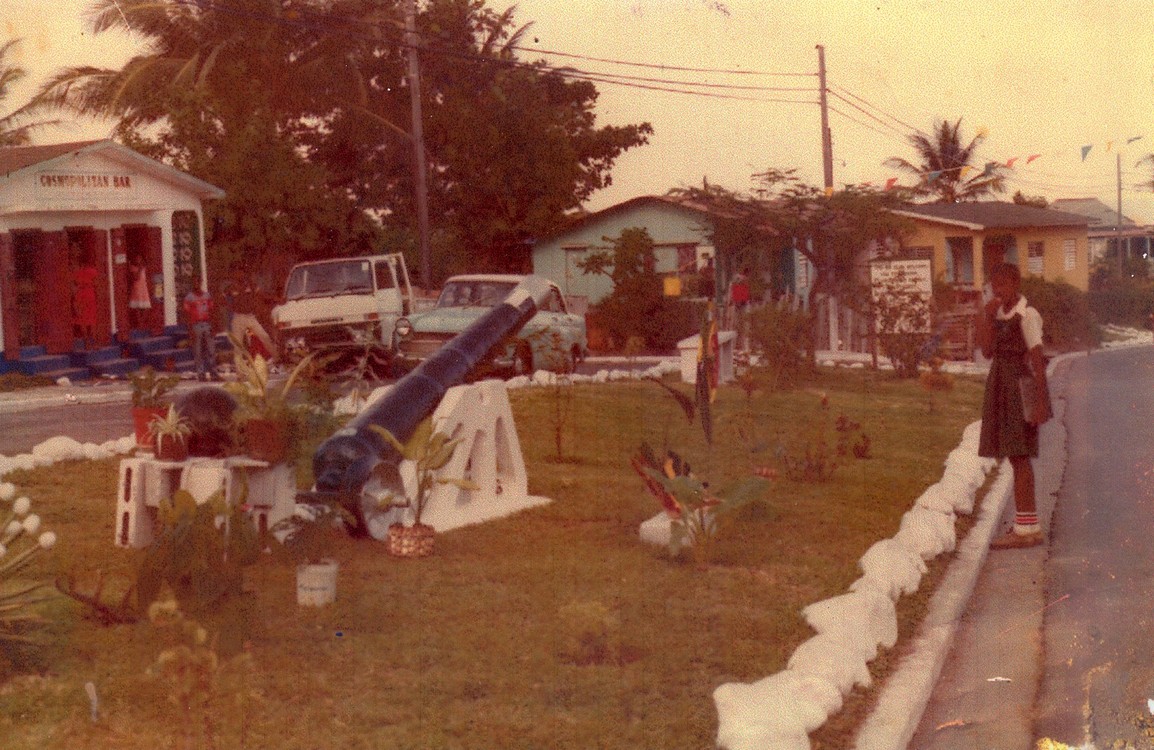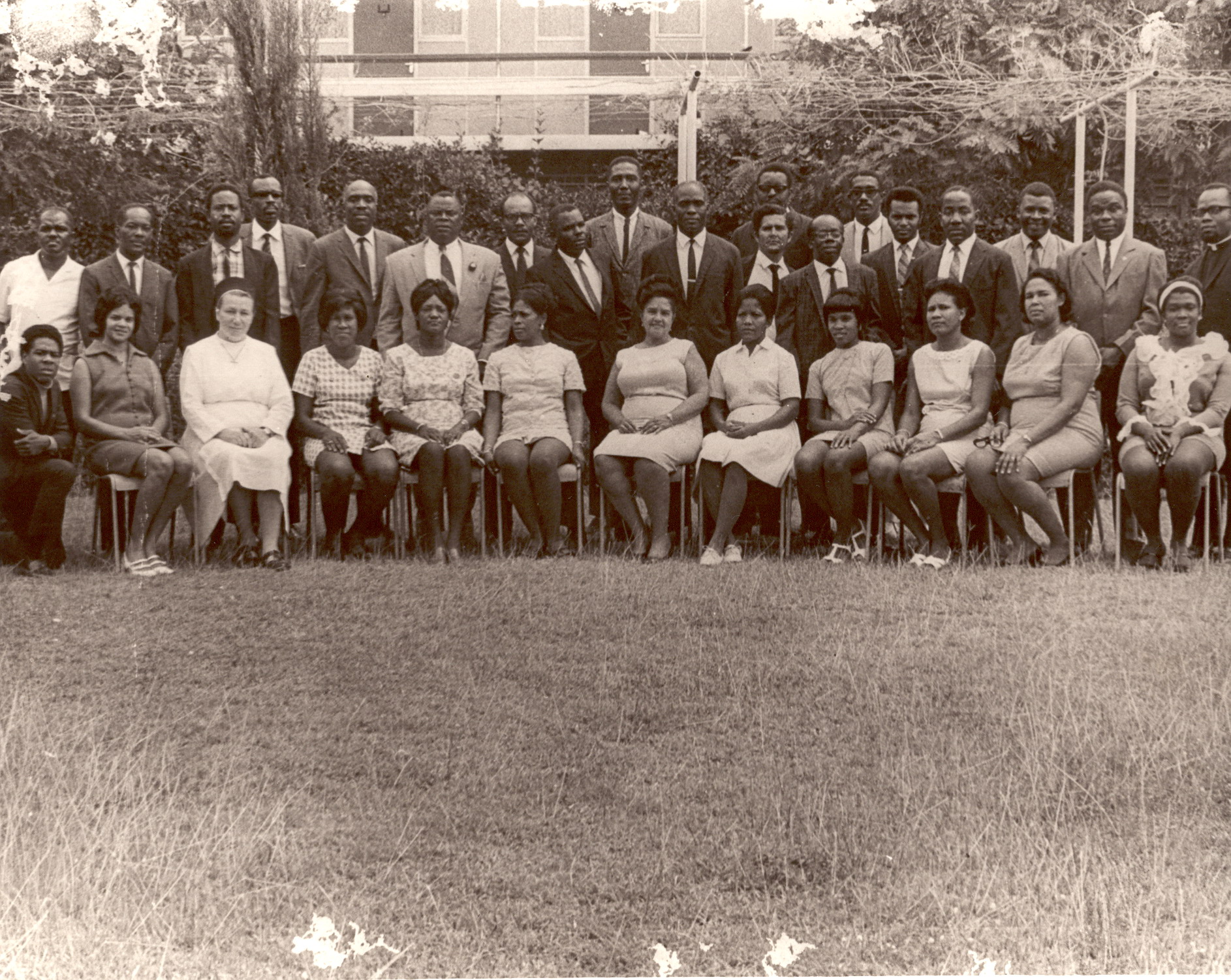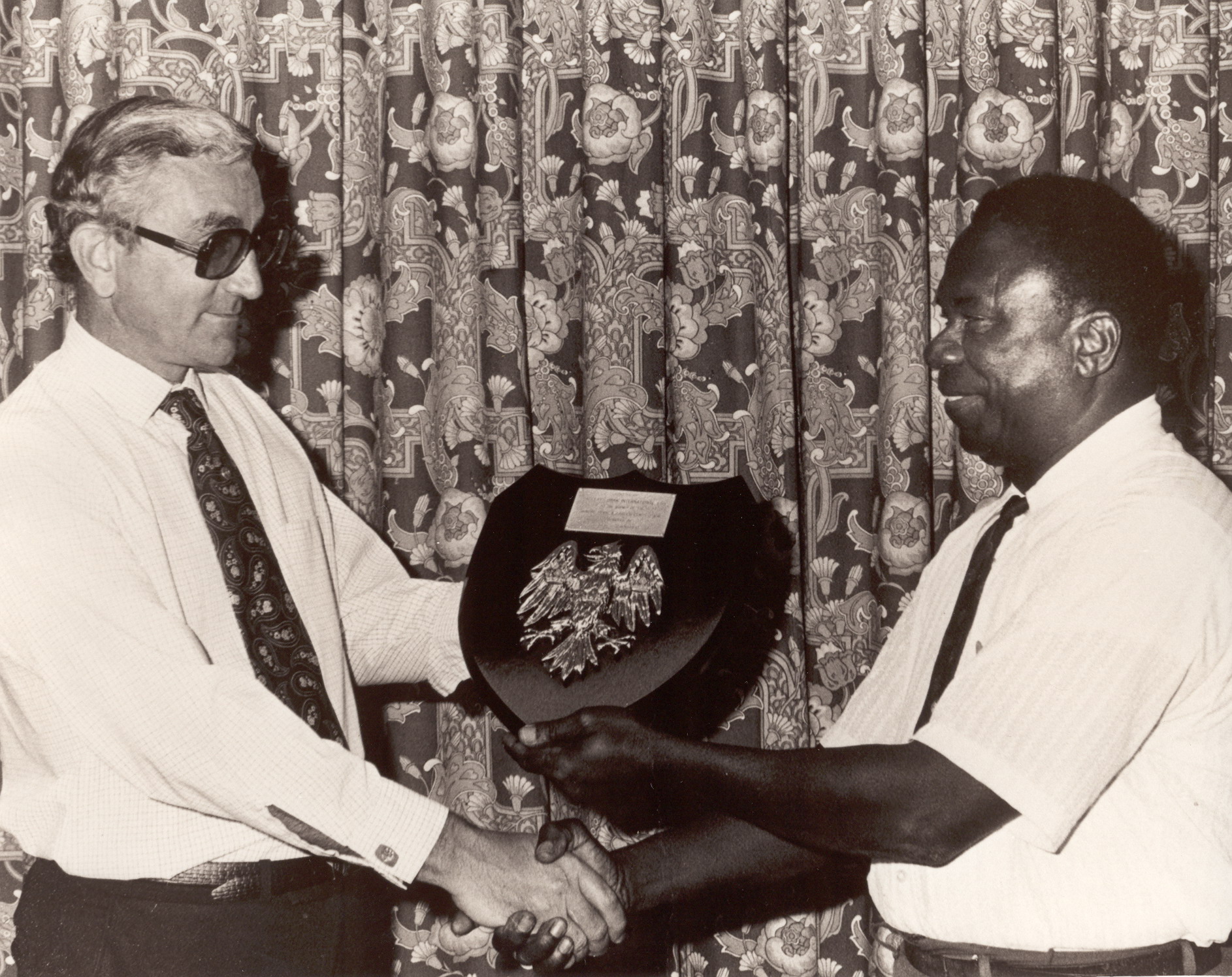Sir Clement Malone
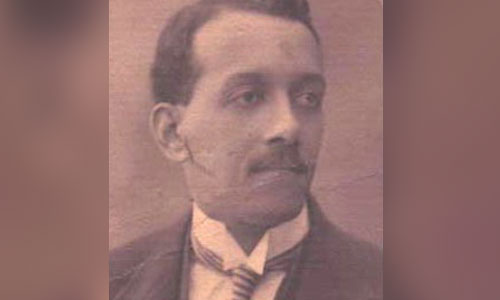
Clement Malone was born in 1883 in Antigua into a coloured family whose members had risen to prominence as merchants, clergymen, lawyers and schoolmasters. He was educated at the Antigua Grammar School and after leaving school was employed as a teacher for one term. It was a position that young Clement did not regret leaving. He entered the civil service of the Leeward Islands and, for a number of years, was assigned to St. Kitts as a clerk in the Treasury Department.
After obtaining study leave, he proceeded to London and enrolled as a law student. He was called to the bar at Middle Temple in 1916 during the early stages of World War I. On returning to Antigua, he was called to the bar of the Leeward Islands and then settled to practice his profession in St. Kitts. The following year he married Ethel Malone and together they had three sons.
The charming “ Mr Clem” as he was affectionately known by the people of St. Kitts and Nevis, quickly gained the trust, respect and affection of the community. His thorough knowledge of the law, his tenacity in maintaining his point of view and his courtesy won him the admiration of Bench and Bar alike and earned him considerable patronage. Within a short time his law practice extended to Antigua, Montserrat and at times Dominica. He even had the unusual experience of representing a man in St. Maarten in a Dutch court. His clients ranged from ordinary men and women to the powerful Barclays Bank and Royal Bank of Canada. When, in 1921 Malone applied for an appointment in the civil service, Administrator Burdon’s reported that he bears a high character in the community and is suitable for employment in any legal post for which colour is not a bar.
On the 28th December 1918, Malone and a small group of coloured middle class professional and business men formed the St. Kitts Representative Government Association (RGA) with a mission ‘to secure the achievement of popular representative government’’. By the following year, 330 men had become members of the RGA and Clement Malone was its President. In a Petition addressed to His Majesty, the RGA requested a franchise that was exclusively adult male who either owned real property valued at £50 or over, or paid an annual rent of £10, or made a yearly salary of £50 or an income of £30. Acting Administrator Wrigley described the Association as a creation of Clement Malone whom he accused of seeking public attention and dismissed it as lacking in support from among the influential persons of the Presidency.
The RGAs efforts produced no tangible results and it quickly disappeared from the scene but it was replaced in 1922 by the Taxpayers’ Association. Its target was the introduction of Income Tax and as based on the premise that persons who paid taxes should have a say in government and so it made issue of all the shortcomings of the colonial administration. Once again Malone was an active member. To counteract the opposition, Burdon recommended that Clement Malone be appointed to the Council but he saw no reason for equality of representation between the planters and the other social classes. In 1925, Administrator St. Johnston recommended that Malone be offered a place on the Executive Council on the grounds that he found the lawyer to be moderate in his views when he fully appreciated the real necessity for a proposal made by Government. However when the offer came Clement Malone declined to accept as he had publicly expressed the view that a member of the Legislative Council should not hold a position on the Executive of the Presidency of St. Kitts and Nevis. Later he changed his mind and accepted to serve on the Executive of the Colony which met in Antigua.
In 1935, Malone found himself caught up in the events that came to be known as the Buckley Riots. Along with Thomas Manchester, Victor John and William Seaton he did his best to defuse the tension caused by the heightened expectations of sugar workers. Their sympathetic, common sense approach persuaded a significant number to return to their homes but was not enough to put an end to the agitation of the remaining crowd. When in March, and April a number of persons were brought to trial charged with causing riots and other related offenses, Malone was there to take the case. He scathingly pointed out discrepancies in the evidence delivered by members of the police force whom he accused of collaborating to bring about guilty verdicts. His defence was described as aggressive, and successful. It certainly persuaded a jury consisting of middle class businessmen to acquit the accused. The following year the planters of St. Kitts and Nevis came in conflict with the St. Kitts (Basseterre) Sugar Factory over the price to be paid for canes supplied to the Factory. Clement Malone and J. R. Yearwood were sent to London to represent the planters’ interests. The negotiation produced an increase in the price of cane.
The 1937 election was contested by the Workers’ League and individual members of the Agricultural and Commercial Society. Clement Malone ran as an independent candidate and often appeared on the platform with W.E.L. Walwyn and P. Ryan but was endorsed by both organisations. As a result he won the largest number of votes from the small electorate. In politics, Malone proved himself to be a popular politician. Although at times an outspoken critic of Government, his sane judgement, and fearlessness won him the sometimes uncertain respect of the Administration and the esteem of the people.
On the 24th April 1940, Malone was appointed Puisine Judge to the newly constituted Supreme Court of the Leeward and Windward islands. This meant that he could not contest the elections of September that same year. His appointment was greeted with a sense of satisfaction among the people of the colony who saw it as a just reward for years of professionalism.
Clement Malone also served on various boards and committees. He was a moving spirit on the Education Board and Vice-President of the Cricket and Football Associations. In 1943 he was appointed to a Board of Inquiry into the trade dispute between the Sugar Producers Association and the St. Kitts Nevis Trade and Labour Union. The recommendations said that the Bonus to sugar workers should continue, that it should be paid in December and that it should be calculated solely on a percentage of the wages earned during the year. Estate pay books were to be made available to the Federal Labour Officer or an officer of the Trade Union in case of dissatisfaction on the part of a worker.
In 1942 Clement Malone succeeded Sir Wilfred Wigley as Chief Justice of the Leeward and Windward Islands. For the third time a coloured West Indian was being appointed to the highest judicial post in a colony. (Previous appointments were Conrad Reeves, Chief Justice of Barbados and Charles Lewis, Chief Justice of Sierra Leone.} This appointment meant that the new Chief Justice and his family would have to take up residence in Grenada. Two years later His Lordship received a knighthood in recognition for his commitment to the law and his contribution to society.
In Grenada, Malone soon found himself involved once again in social issues. 1947 saw the launching of the Grenada Cooperative Nutmeg Association. Whose objectives were to secure more stable price, to end the competition between Grenadian exporters, to eliminate the middleman and increase profits and to set standards of quality. Malone was foremost among those who spoke in support of the association and on that occasion his views were aired on radio in a speech entitled “A West Indian University.”
In 1951, it was his birthplace that needed his calm approach to volatile issues. That year Antigua found itself in the throes of a general Strike. The planters stopped the crop, claiming that it was a waste of resources to reap a crop of less than seven thousand tons a week. Other matters added fuel to the flames and in April the sugar curers at the factory refused to clean the mixers. Furthermore the AT&LU had not informed the employers that May 1st was to be celebrated as Labour Day and workers were to be called off the job. After May Day workers from all walks of life refused to return to their jobs and the AT&LU demanded the reinstatement of the sugar curers. Sir Clement Malone, who had retired from the Bench the previous year was called upon to head a Commission of Inquiry into the matter. and the adversaries were given the opportunity to air their differences. The proceedings started on the 11th June but were disrupted when a state of emergency was declared. British Troops had been called in and the AT&LU refused to appear before the Commission. The hearings ended on the 2nd August and in its report the Malone Commission accused the AT&LU of striking first and thinking later. The report sharply criticized the AT&LU but saw no reason for banning strikes. It also recommended the nationalization of the sugar industry in Antigua.
The 1950s saw the creation of a Federation of the West Indies. Sir Clements’s statements demonstrated a more down to earth approach to the initiative. he felt that practicalities should come before politics and suggested that the coordination of transport and communications services and a better marketing of the economic resources of the region should be the first steps towards creating a meaningful political unit in the West Indies.
Sir Clement Malone died in Trinidad on the 9th April 1967 at the home of his eldest son. He was 84 years old and still enjoying the respect and adulation of many West Indians.
Mary Charles
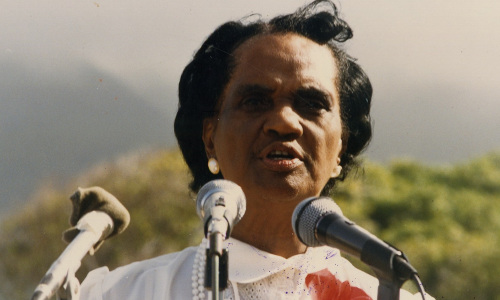
Mary Georgina Charles-George was born on 19 July 1913 to Henry Elijah Charles and Frances Ann nee Carey of Phillips Village. Both of her parents were skilled people who had grown up in the same village. Henry was a carpenter and Frances as a seamstress. Mary was their first child and they instilled in her a good work ethic and a great sense of pride.
As a child she attended the Estridge Moravian School and obtained her 7th Standard certificate then at the age of 13, she became a pupil teacher. Her father died in 1928 when Mary was only 15 years old. The family belonged to the Moravian congregation and the church facilitated her teacher’s training at the Spring Gardens Teachers Training College in Antigua by way of a scholarship. For about a year after graduation she was without a job but she offered her services to the same school that had initiated her education.
Mary Charles later taught at St. Paul’s, Trinity Palmetto Point, Molineux, and Cayon, taking on the role not only of teacher and head teacher but also of mentor and counsellor for many young persons and younger teachers. She strongly believed in solidarity within the profession and was involved Teachers Associations in St. Kitts as well as in the Caribbean Union of Teachers.
Miss Charles was also very community minded and often participated in the beautification of her village. She also took an active interest in the lives of youths. Then in 1957, following the death of her sister, she became the guardian of five nephews and still she continued to mentor others outside the home. Those who were not employed she assisted with the preparation of job applications. She encourage parents to consider sending their promising off-spring to study in England. She gave opportunities to girls who had become pregnant while still in school to do their final exams. While she believed strongly that youths should not waste their lives, she also realized that that sometimes they needed a helping hand whether this meant nudging a young woman to study nursing abroad or putting in a good word for a deserving person with a prospective employer.
Writing about his experiences at Trinity School, Sir Probyn Innis singled our Mary Charles as a teacher par-excellence “There was no formal Parent-Teacher Association at Trinity School at that time, but “Teacher Mary” had ways and means of reaching the parents to urge them to do what she considered to be the best for their children”. Even while on vacation in England, Charles continued her campaign to improve the prospects of young people in St. Kitts. When she came across parents who had gone to England leaving children with relatives, she encouraged them to send for their children believing that they would be better off with their parents. Many heeded her advice even if they had to do so, one child at a time.
Outside of school, Mary Charles was the moving force behind organizing the Molineux Cricket Club. She enjoyed a good game of cricket as long as the Sunday games were played after “Church Time”, that is not before one o’clock. She also organized the Christ Church Literary & Debating Society which exposed individuals to many cultural, social and educational events. There were regular club meetings which helped with the development of leadership skills; outings and picnics to places of interest and the fund-raising dances.
Mary Charles retired from the government service in 1970 and in the 1971 election, she became the first woman to present herself as a candidate in a general election in St. Kitts and Nevis. She ran on the ticket of the People’s Action Movement against a very popular candidate, E St. John Payne, of the Labour Party and lost. The following year she moved to the Virgin Islands where once again she joined the teaching profession. In 1975, she married Valdemar George and they settled in Christiansted. Mary Charles-George retired from teaching in 1978 and in 1979, she was made a life-time member of the Caribbean Union of Teachers In recognition of her many years of service to education, She was awarded the Order of the British Empire in the New Year’s Honours for 1985 and a hospital in Molyneux was named in her honour in 1986. Mary Charles-George died on the 18 March 2008
May Stevens
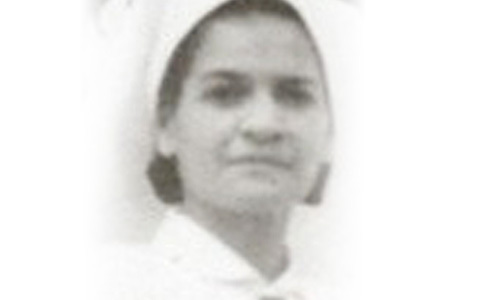
Yvonne May Stevens was born on the 28th May 1910 into the large family of James Henry Stevens and his wife Ethlinda Leonora nee Penn. Her father was at the time, the Master of the Leper Home in Sandy Point but by 1914 the family had moved to Nevis where he held the post of Assistant to the Surveyor on that island.
May grew up in a disciplined close-knit house hold that valued family and education. In her teens she developed an interest in nursing and was encouraged in her ambitions by her father. Mrs. Stevens however did not like the work and made her objections abundantly clear to her daughter. Young May would not be deterred and with her father’s support enrolled in the nursing programme at the Elizabeth Garett Anderson Hospital in London. This was a time when the position of Matron in the Caribbean was held by a British woman. May Stevens was determined to change all that. She completed her diploma as a State Registered Nurse and stayed in England during part of the war years to ensure she had a proper grounding in the profession. At the time London was under regular bombardment by the German Luftwaffe.
Miss Stevens returned to St. Kitts to take up the post of District Matron in 1942. This branch of nursing was still in its infancy on the island. In due course Stevens was employed as Matron at the Glendon Hospital in Montserrat. Then in 1949, she was appointed Matron of the Cunningham hospital in St. Kitts. She was the first person born in the Presidency of St. Kitts-Nevis-Anguilla to hold the position. This meant that Stevens was responsible for the day to day management of the hospital and the training of nurses. Because student nurses also functioned as members of staff, training was, at times, sporadic. To enable her to administer the final General Nursing examination locally, she was given the opportunity to attend a Sister Tutor’s Course at the Royal College of Nursing.
The discipline of her youth was reflected in her approach to her new job. She expected nurses to be professionally attired, and observant of hospital rules even if this meant the withdrawal of privileges formerly enjoyed by the upper classes of Society. She was also aware that her own performance was under a microscope and that there were those who were looking for excuses to criticize her skills and abilities. However she stuck to her course putting the interest of the patient first and the encouragement of her nursing staff a very close second. The education of nurses was a priority. In 1960 she worked with the Chief Education Officer to facilitate evening courses in Mathematics and English for nurses willing to sit the General Certificate of Education and she sought scholarships for staff nurses who showed leadership potential.
May Stevens’ whole life was centered on the hospital and she earned the respect of her staff, physicians, health workers, patients and the community in general. On retirement in 1967, Stevens returned to Nevis where she continued her involvement in healthcare through her work with the Red Cross. She was honored for her commitment to nursing in 1969 and in 1999.
Basil Henderson
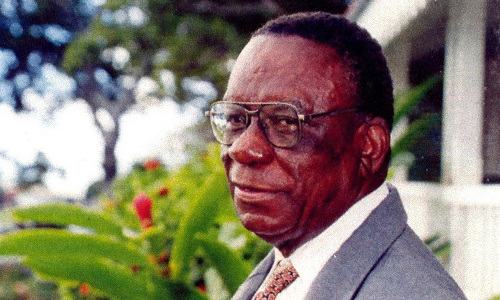
Basil Ebenezer Henderson was born on 24 April 1924 to Ethel Augusta Paul. Young Basil grew up in the Catholic church and remained devoted to it all his life. He would become the social organizer par excellence. He put all his energy and determination into the projects he undertook often travelling from one end of the island to the other, at all hours whether he had his own transportation or had to use the bus.
Initially he put a lot of interest in sports. He was responsible for beginning village sporting activities; football, netball, cricket and table tennis. He was an outstanding footballer and even captained the Rivals Football Club as well as the St. Kitts and the Leeward Islands team. He served in the Defense Force and in later years did not hesitate to share his memories of the war days and his time as a soldier.
For most of his adult life, Henderson was a civil servant. In his teens he worked in the supply office and then went on to the Labour Department and later to the office of the Administrator. As Head Messenger he took great pride in making sure that communications in the Civil Service ran smoothly. However he was also a welfare officer with duties to begin councils in the villages in St. Kitts. This was started with Conaree, Keys and Mansion. His training in this field was also responsible for his starting a branch of the 4 H in St. Kitts in 1950. Many youths, especially in the rural areas were given opportunities to develop a wide variety of skills through their membership in the club. Many went on to fill leadership positions.
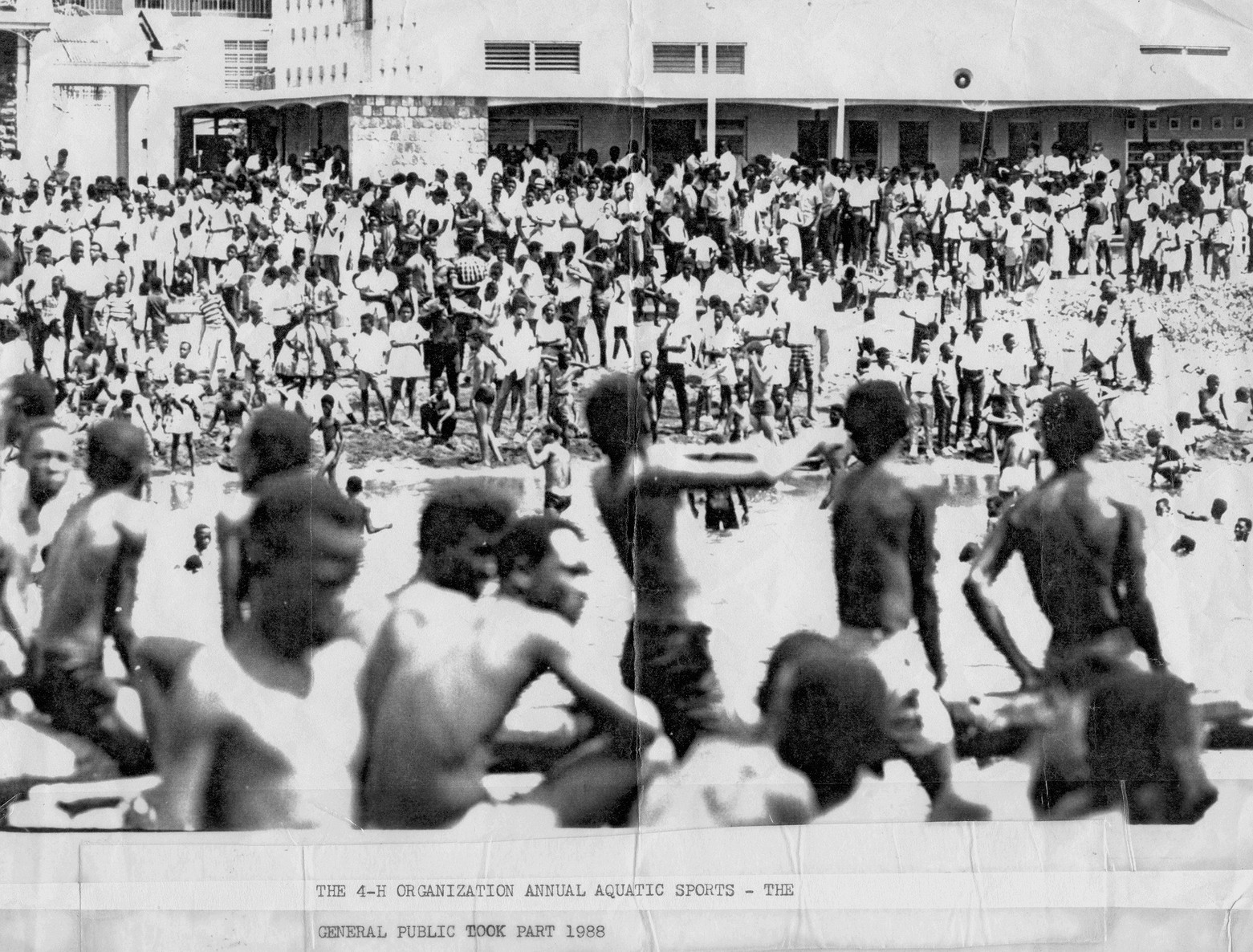
In 1951, Henderson organized the first Easter Parade and the first Aquatic Sports meet in the Bay Front. His interest in sports continued even when his participation as an athlete came to an end. He was always looking for new ways to engage the community. In 1957 he was responsible for launching the first Carnival. This was an activity meant to attract people to the island so Henderson may be said to have contributed to the tourism product. Steel pan was already evolving in St. Kitts but Basil Henderson started organizing the Bands into a Steel pan Association coordinating visits of Kittitian Steel Bands to other islands and assisting others to perform here as guests. He organized Best Village competitions to encourage community spirit and to make sure the island looked attractive. For the children he started the Christmas Tree lighting event in the Square and year after year he ensured that children of the not-so-privileged enjoyed a Christmas present from Father Christmas.
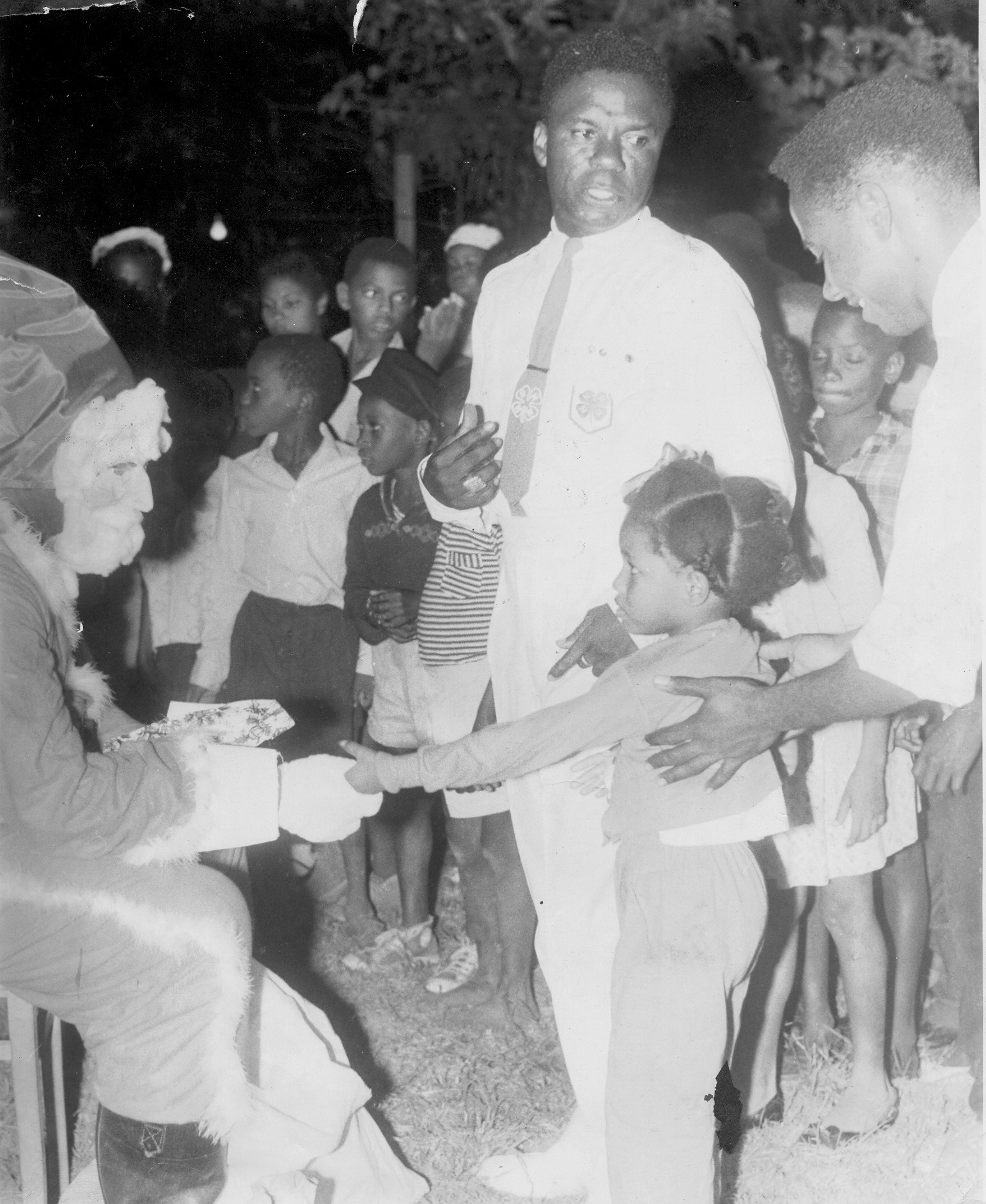
Henderson had a number of opportunities to go to England or the United States to develop himself. He took those that allowed him a chance to make a bigger contribution to St. Kitts. It was never about his career. John F Kennedy at his inauguration said, “ask not what your country can do for you – ask what you can do for your country.” Basil Henderson lived by that principle till he passed on the7th of March 2003.
Len Harris
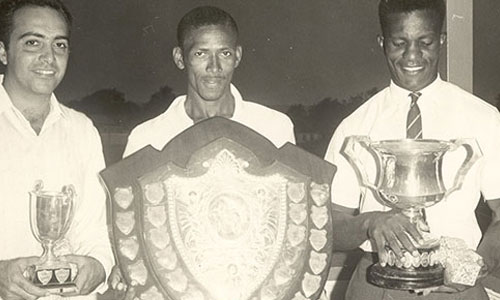
Leonard Alphonso Harris, the son of Kenneth and May Rose Harris pf McKnight was born on the 3 September 1934. He was educated at the St. Joseph Catholic School then went on to work at the Sugar Factory. He moved to the Youth and Community Department where he worked as a truancy officer, making sure that children went to school and stayed off the streets and later was a sports officer and in this capacity received training as a coach at Loughborough University. He eventually tried a short stint in the Virgin Islands but an illness soon brought him back to St. Kitts.
It was in cricket that Len Harris made his name. It ran in the genes. Both his father and his brother Maurice were valuable players. Many still regard him as one of the best batsmen that St. Kitts ever produced. Some went so far as to say that he was one of the best cricketers never to play for the West Indies. Dwyer Astaphan wrote that the reason for this was that the both cricketers and administrators from the small islands were not taken seriously. Mikes as he was also known, was a “batting master with a confident .competitive and determined personality, good powers of concertation, excellent and quick footwork, exquisite, cutting and flicking skills of the highest order, an appetite for big scores and sound batting and cricket intelligence.” Certainly one of his performances for the Combined Leeward-Windward Islands against Guyana earned him the attention of the Trinidad press. Harris was also a useful swing and spin bowler and a world class fielder.
He first entered cricket at Progressive Club, moving on to St, George’s with the help of Wentworth ‘Natta’ Payne. There he continued to be an inspiring presence with an impish sense of humour and an appreciation for upcoming talent. Coming from a humble background he was often overlooked, until another player made it possible for him to get into the starting Eleven. His highest score was 218 not out against Antigua in 1968. In career Harris played against four international touring teams He captained the St. Kitts Team, that of the Leewards and also the Combined Islands. He demonstrated amazing concentration while the game was going on and great sportsmanship off the field.
Harris played football and did some running but the other area where he left his mark was in Calypso. As Lord Mike he sang One two three which became a big hit when sung by the Merry Men out of Barbados Big turkey kill little turkey, and St. Kitts is me bornin land which are still talked about as classics of Kittitian calypso.
Len Harris or Lord Mike was devastated by Alzheimer’s in later years and he died on the 16 March 2006. His sense of humour was still evident at that difficult time as was his strength of character. His pursuit of the game he loved so much was never dampened by the tough hand dealt to him at the international level and he remained an inspirational and motivating player throughout his career.
National Archives
Government Headquarters
Church Street
Basseterre
St. Kitts, West Indies
Tel: 869-467-1422 | 869-467-1208
Email: NationalArchives@gov.kn
Website: www.nationalarchives.gov.kn
Follow Us on Instagram

